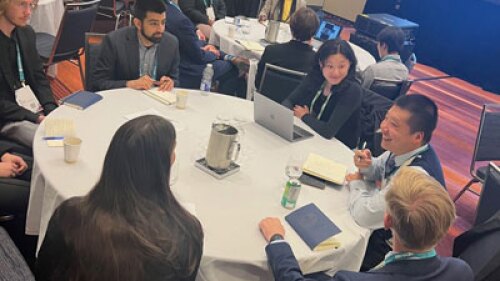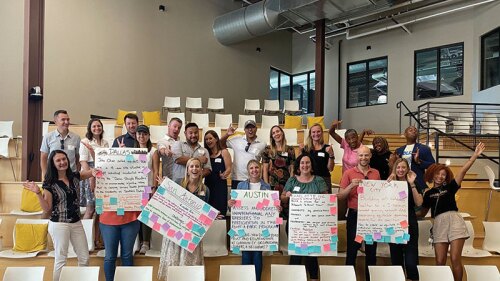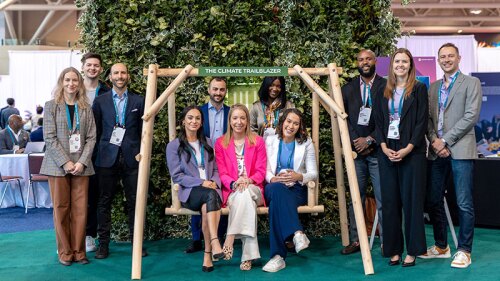FutureBuild 2016, hosted in January by ULI Los Angelesin partnership with VerdeXchange, offered a look at urban growth challenges in Los Angeles that are illustrative of issues faced by cities everywhere as they aspire to become more livable, prosperous, and sustainable.
The event, which attracted designers, developers, civic leaders, and environmental stakeholders, explored a range of issues including the restoration of the Los Angeles River; advancements in environmentally sustainable building; how transportation technology is transforming cities; and developing resilience to extreme weather and other impacts of climate change.
Mayor Eric Garcetti headlined the event with a keynote address outlining his city’s ambitious efforts to restore the Los Angeles River and transform the waterfront into a public amenity. The massive project includes a plan from the U.S. Army Corps of Engineers to allocate $1.3 billion to restore several miles of the riverfront with greenery, parks, bikeways, and walkways. Stakeholders are considering revitalization options, including a proposal from architect Frank Gehry. “I look forward to hearing the music of the river,” Garcetti said.
A panel on seismic and infrastructure issues addressed the formidible challenges Los Angeles faces as it attempts to become more resilient. Marissa Aho, chief resilience officer for the city of Los Angeles, cited steps the city is taking as a participant in the 100 Resilient Cities program funded by the Rockefeller Foundation, including the implementation of several recommendations from the highly respected seismologist Lucile Jones.
Panelist Rick Cole, Santa Monica city manager, described the challenge of preparing for climate change in a cash-strapped environement. He pointed out that before Los Angeles can implement major resilience-related capital improvements, the city faces approximately $100 billion in more fundamental infrastructure needs. “There is simply not enough money to go around,” Cole said. “We have to get back to the basics. . . . Otherwise, we will have a third-world infrastructure trying to meet the needs of a first-world economy.”
Another compelling panel focused on sustainable buildings around the world. The panel included presentations by David Martin, design principal, AC Martin, who is designing the 73-story Wilshire Grand tower; and David Kramer, president, Hudson Companies, who is developing Manhattan’s Riverwalk on Roosevelt Island.
While the Riverwalk technologies are designed to respond to New York’s extremes of heat, cold, and storm surges, the technologies being used for sustainable development in Los Angeles entail a different approach, panelists noted. “In New York City, you want to insulate the client from the climate,” Martin said. “In L.A. [where the climate is more temperate], we want to connect with the outside.”
According to Martin, his team will “fine-tune” the Wilshire Grand to suit the micro-climate of the city’s downtown. Approaches include breathable skin, and smaller and smarter air conditioning, so that the building’s heating and cooling system is not overtaxed. The skyscraper will include hundreds of operable windows, which are still rare in Los Angeles’s high-rise buildings.
Trends in health-oriented design and development were discussed during a panel featuring a presentation from Randall Lewis, owner of the Lewis Group of Companies. Lewis has been a major benefactor of the ULI Building Healthy Places Initiative.
Lewis described the approaches he is using in his communities, many of which are on Ontario Ranch in California’s Inland Empire:
- Healthy design (with guidance from ULI’s Building Healthy Places Initiative);
- Education-centered communities with schools and joint-use facilities at the center;
- “Harvest” branded developments with edible landscaping and outdoor dining; and
- Ambitious coordination with local colleges and medical educators (reflecting heath care as a growing industry in the Inland Empire).
These are designed around the theme of the Healthy Ontario initiative, which emphasizes prevention and wellness; access to health care, education, and lifelong learning; and safe and complete neighborhoods.
Jack Skelley is a public relations professional and a member of ULI Los Angeles.





